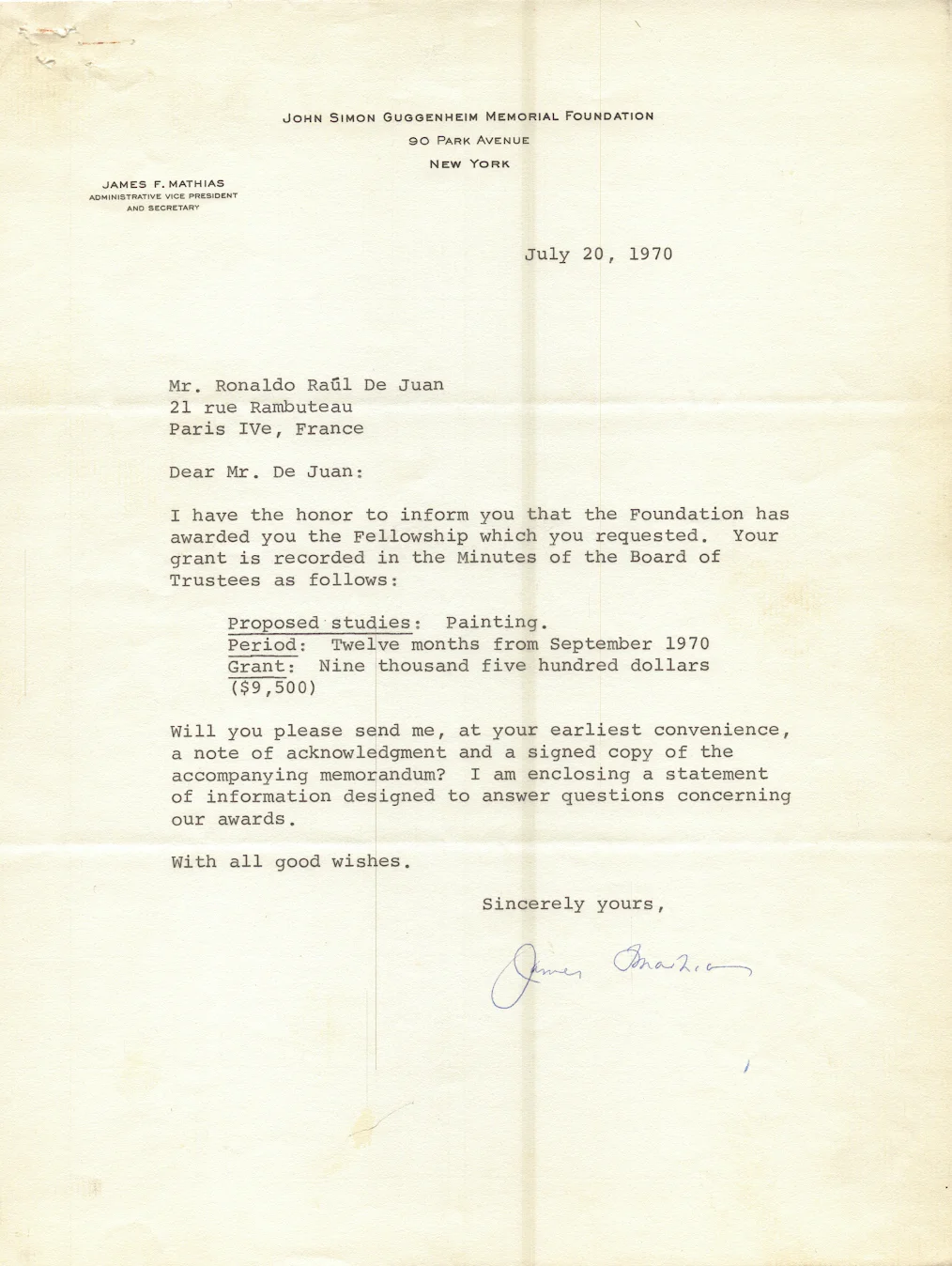Ronaldo De Juan entered the National University of Córdoba in the early 1950s. He participated in a group identified as the "Modern Artists of Córdoba" alongside Pedro Pont Vergés, Marcelo Bonevardi, José De Monte, Alfio Grifasi, and Antonio Seguí.
In 1956, De Juan received the Grand Prize from the Dr. Genaro Pérez Museum. Two works entered the museum's permanent collection: "Máquina No 1" (78 × 147 cm, oil on canvas) and "Naturaleza Muerta" (65 × 32 cm, oil on canvas).
1957: Awarded Rotary International Foundation Fellowship
1958: Participated in IKA Salon, Museo Caraffa, Córdoba — part of what would become the influential
Bienal Americana de Arte, sponsored by Industrias Kaiser Argentina, which gained international
recognition for showcasing emerging Latin American contemporary art.
Historical Context: The Bienal Americana de Arte
The IKA Salon where De Juan exhibited in 1958 was part of a groundbreaking series of contemporary art events that would evolve into the formal Bienal Americana de Arte by 1962. Sponsored by Industrias Kaiser Argentina (IKA), these exhibitions were pivotal in establishing Córdoba as a significant center for contemporary art in Latin America.
Beginning with visual arts salons in 1958, these biennials gained international attention for showcasing Latin American artists alongside international figures, eventually including experimental music with composers like John Cage in 1966. De Juan's participation in the inaugural 1958 salon positioned him at the forefront of this transformative moment in Argentine art history, as part of the "Modern Artists of Córdoba" who would help define the region's artistic identity on the international stage.

